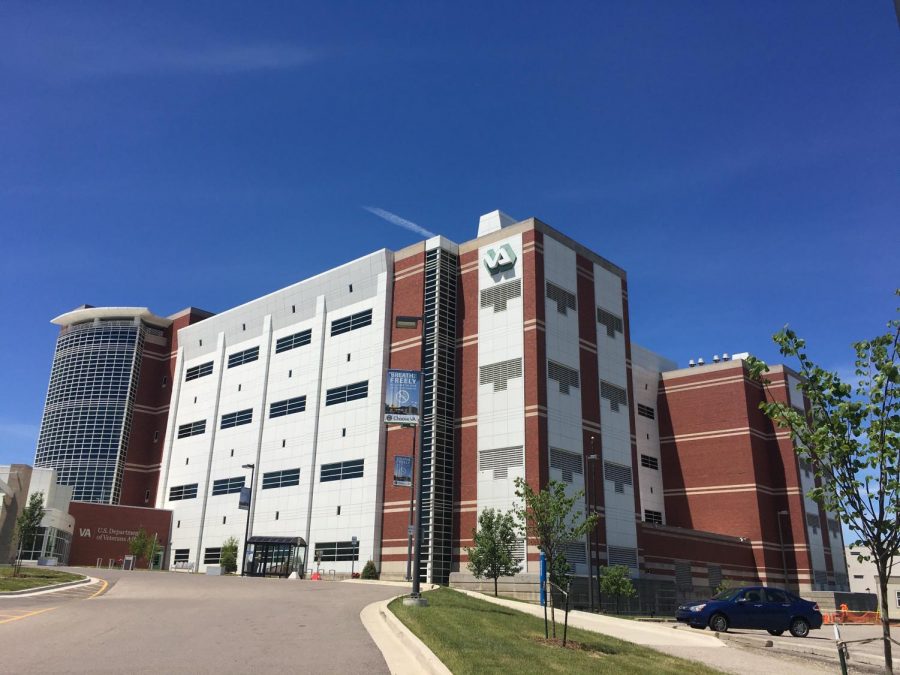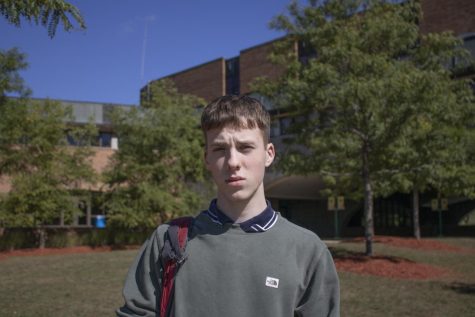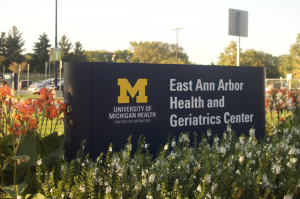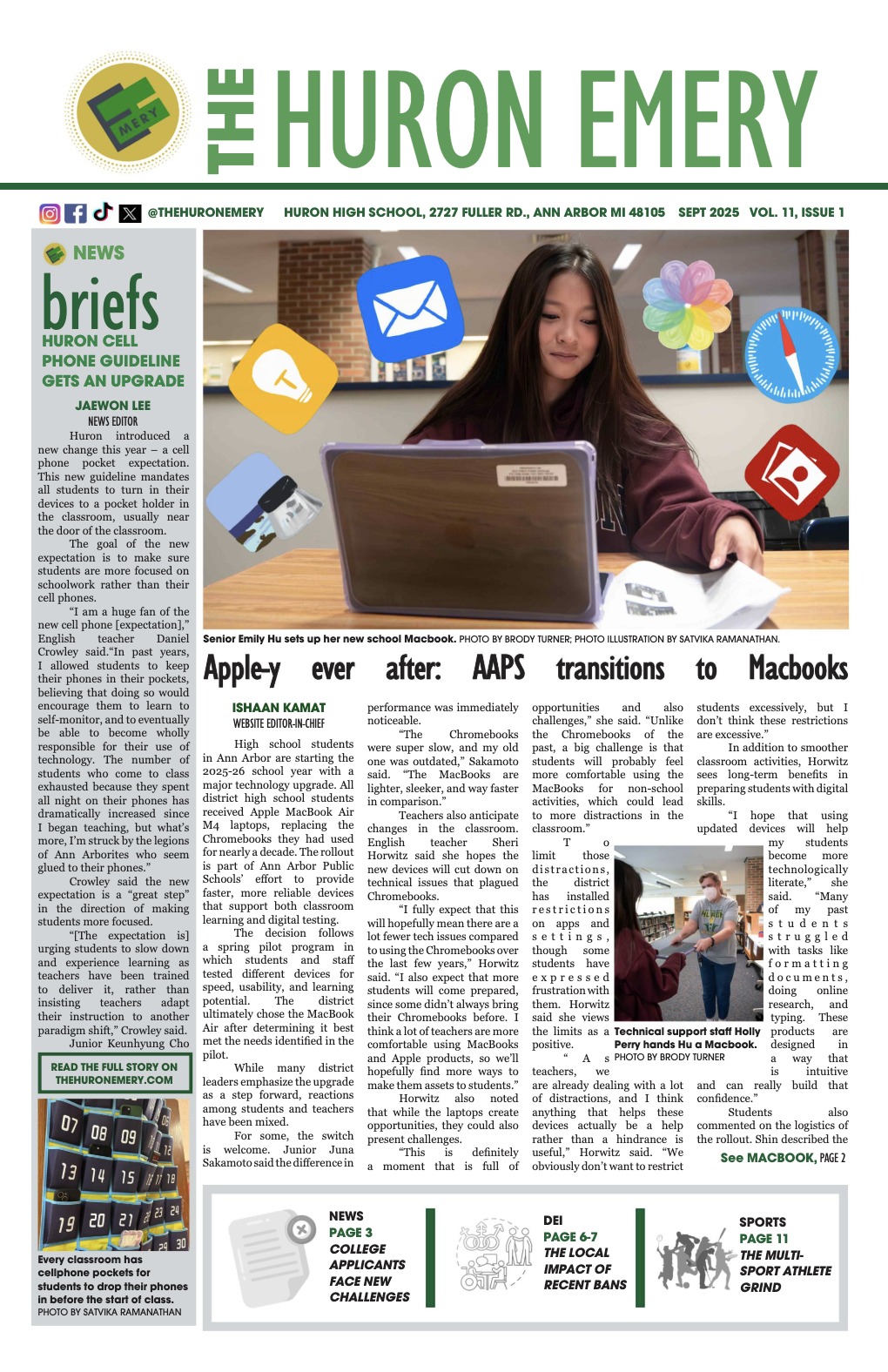Ann Arbor Veterans hospital adjusts to virus
The An Arbor VA is now providing care to non-veteran patients in an effort to decrease the spread of COVID-19.
June 24, 2020
The virus known as SARS-CoV-2 has spread across the globe, shutting down entire countries to “flatten the curve.” Despite these efforts in the U.S., like many other countries, the number of fatalities continues to grow. There have been more than 1,600,782 United States cases (with more than 95,972 U.S. deaths), of which there are more than 53,913 cases in Michigan alone.
However, Ann Arbor Veterans Administration Hospital, paints a very different picture of the COVID-19 outbreak that’s devastating the globe.
“We expected a large wave of patients to come in through our emergency department and luckily that has not happened,” Associate Chief of Staff of Inpatient Medicine Dr. R.J. Schildhouse said. Dr. Schildhouse oversees the VA’s hospital operations.
Throughout the pandemic, the VA has always had open bed space so they accept transfers from other hospitals in the area, both COVID and non-COVID patients.
“The goal in the humanitarian mission is to offload community hospitals that are essentially overrun,” Dr. Schildhouse said. The VA is, for the first time in its history, accepting community patients.
The VA has been working to procure and stockpile the required Personal Protective Equipment since the first COVID cases have been identified in Michigan. Nurses and physicians must find the most efficient ways to provide care to patients while reducing contact. The extensive protective equipment that is required to care for patients means that there is sometimes time in between when a patient may request help or a service, and the time they may be visited by the correct personnel. The Ann Arbor VA has enough PPE to follow recommended guidelines, but the workers are careful not to waste any materials.
“One of the things that we have done so make sure we have the right PPE is we have traded things that we have a lot of with other facilities in our area that need the things we have,” Dr. Schildhouse said.
Treating COVID has presented multiple challenges for patients as they are mostly isolated, and cannot be with their family. To combat this, the VA provides iPads for patients to contact their loved ones, and physicians call patient’s families daily to keep them up-to-date.
COVID patients can also worsen dramatically in a short period of time.
“It is very common for them to come to the ER, get diagnosed and then go home, but then decompensate or get worse and have to come back and they get worse pretty rapidly over the course of even like 3 or 6 hours,” Schildhouse said.
While vaccine trials are underway, supportive care is the current treatment given to those suffering from COVID.
“Our treatment guidelines to date do not support any drugs or IV medications,” Dr. Schildhouse said. “Today there have been no… studies that have shown that any medication affects the clinical outcome, i.e., the morbidity or mortality for COVID-19,” The VA continues to participate in studies, as this is the only way to verify if drug treatments are effective.
Non-COVID veterans that are in need of imminent help are also still receiving treatment at the VA. While those whose outcome will not be affected if untreated for two to three months will most likely not receive care instantly, those veterans who are in dire need of medical assistance will reliably receive it.
While the Ann Arbor VA is an example of an institution that managed to avoid extreme overcrowding, they continue to help communities that are struggling against COVID-19.
Both the University of Michigan Hospital and the VA have been spared the scenes of overcrowded, frantic hospitals filling our TV screens and news feeds. While Dr. Schildhouse acknowledged that, “VAs in other regions that have been hit harder like in New York or Louisiana and not all VAs might be in the same way,” he also noted that the Ann Arbor VA and U of M hospital had been “fortunate.”
“The VA hospital has been preparing for a long time. I would say since there were cases identified in Southeast Michigan, we have been doing a number of things. One of the things we did to get ready was to prepare two different areas of the hospital – the ICU and the regular wards to take care of COVID patients and to keep them separate from all the other patients so the infection won’t spread from room to room,” explains Dr. Schildhouse. Construction and careful planning in preparation for a surge of patients led to the VA nearly doubling their capacity. Perhaps it was foresight and preparation that is ensuring today that the VA is not a scene of chaos or stringency.
Not everything has gone smoothly though. Testing is improving, but was scarce early on, as the nation struggled to catch up with the easily spread disease. Dr. Schildhouse acquired new rapid testing platforms, which can quickly determine a patient’s COVID status, early in the pandemic. Schildhouse also noted that a partnership with the University of Michigan has proved useful in increasing testing capacity.
As the VA adapts to these new challenges, things become easier. Testing is more frequent and accessible, patients can be attended to quicker, and further research is conducted into the virus.











